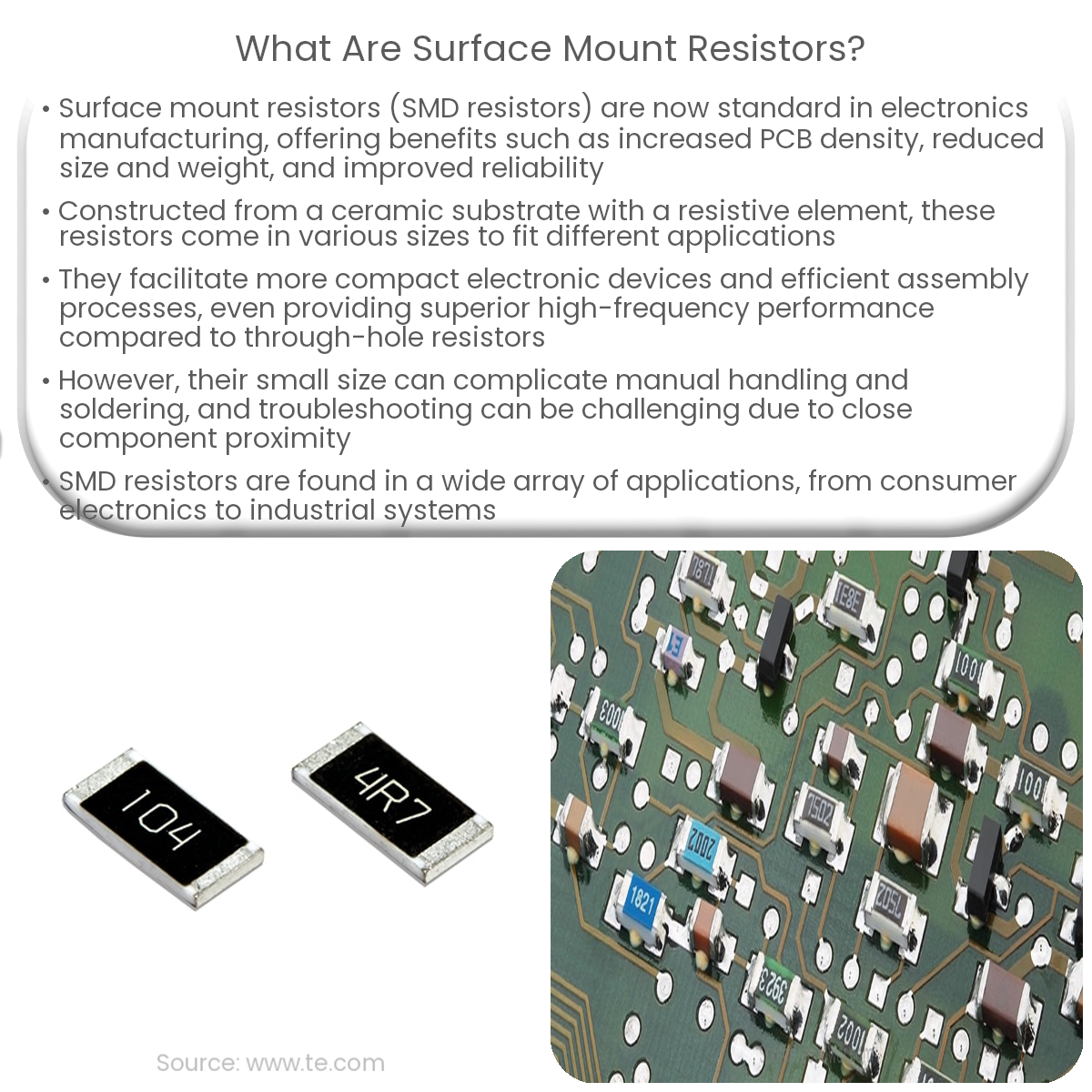Surface mount resistors are small, lightweight resistors mounted directly onto PCBs, offering higher component density, improved performance, and reduced size.
Introduction to Surface Mount Resistors
Surface mount resistors, or SMD resistors, are a type of resistor designed to be mounted directly onto the surface of a printed circuit board (PCB) as opposed to through-hole resistors, which are inserted into holes drilled in the PCB. Surface mount technology (SMT) has become the standard in electronics manufacturing due to its advantages over through-hole technology, such as increased PCB density, reduced size and weight, and improved reliability.
Construction and Sizes
Surface mount resistors are typically made from a ceramic substrate, such as alumina, with a thin-film or thick-film resistive element deposited on the surface. The resistive element is protected by a passivation layer, and metal contacts are added to connect the resistor to the PCB. SMD resistors come in various sizes, known as packages, which are denoted by a three- or four-digit code representing the length and width in tenths of millimeters or hundredths of inches. Common sizes include 0603 (1.6mm x 0.8mm), 0805 (2.0mm x 1.25mm), and 1206 (3.2mm x 1.6mm).
Advantages of Surface Mount Resistors
- Size and weight: SMD resistors are smaller and lighter than their through-hole counterparts, allowing for more compact and lightweight electronic devices.
- PCB density: Surface mount resistors enable higher component density on PCBs, leading to more functionality in smaller spaces.
- Assembly efficiency: SMD resistors can be placed by automated pick-and-place machines, streamlining the assembly process and reducing production costs.
- Improved performance: SMD resistors have lower parasitic inductance and capacitance, resulting in better high-frequency performance compared to through-hole resistors.
Limitations and Challenges
Despite their advantages, surface mount resistors also have some limitations and challenges. Due to their small size, they can be more difficult to handle and solder manually, especially for hobbyists or in prototype development. Additionally, the small size and close proximity of components on the PCB can make it more challenging to troubleshoot and repair electronic devices.
Applications
Surface mount resistors are widely used in various applications, from consumer electronics like smartphones and laptops to automotive, aerospace, and industrial systems. They are integral components in controlling, regulating, and shaping electrical signals, as well as providing protection for other components in the circuit.


